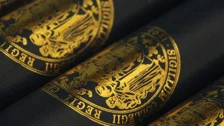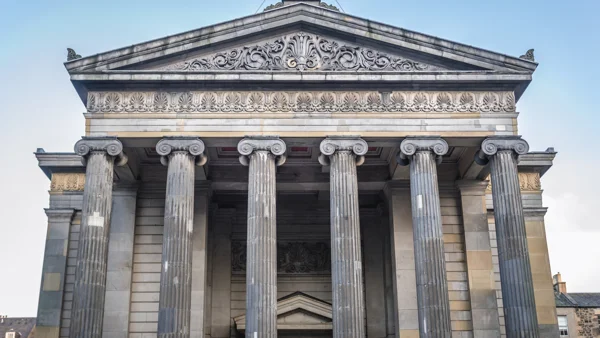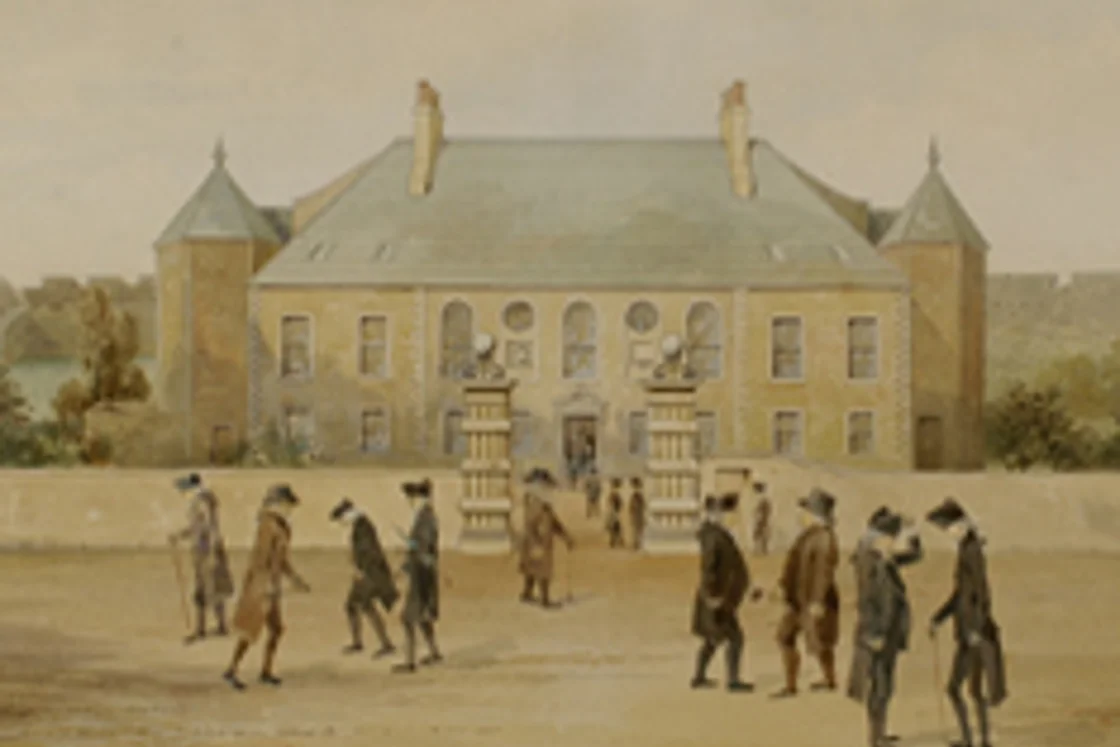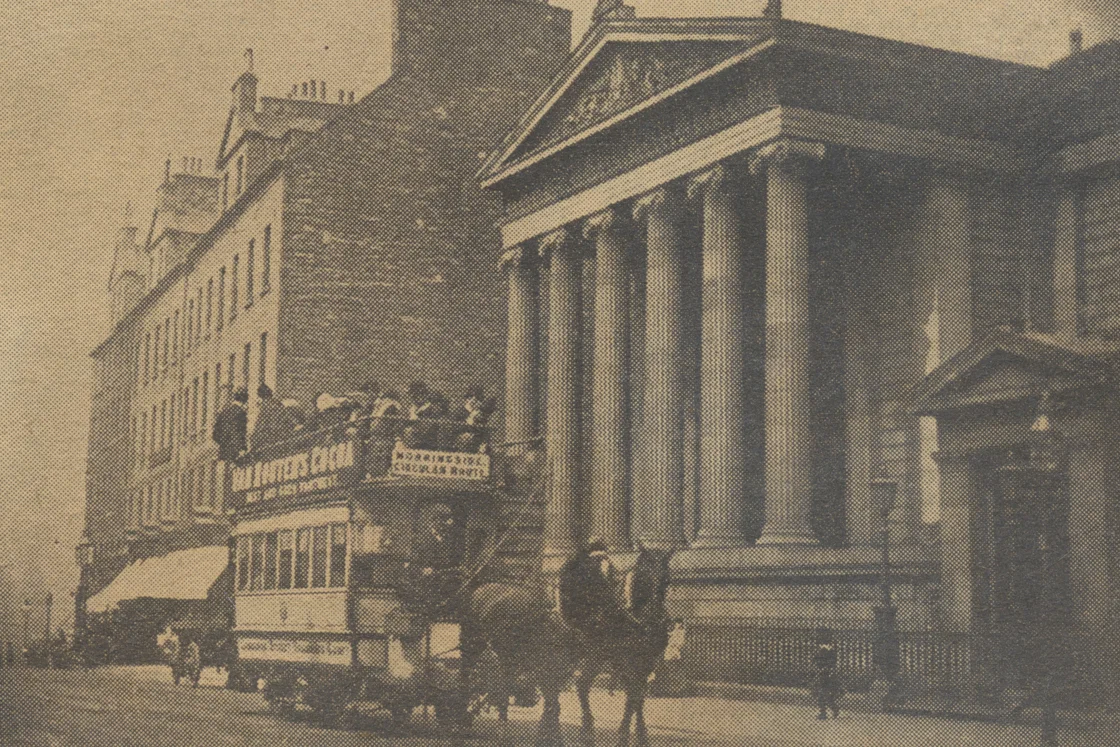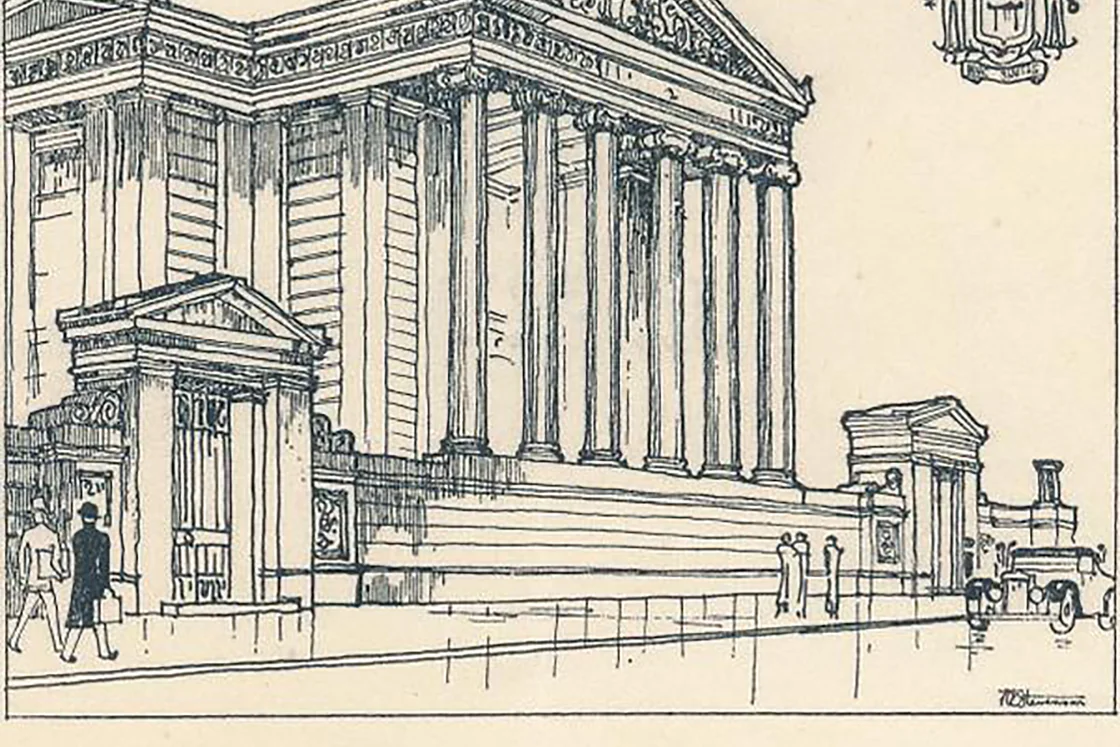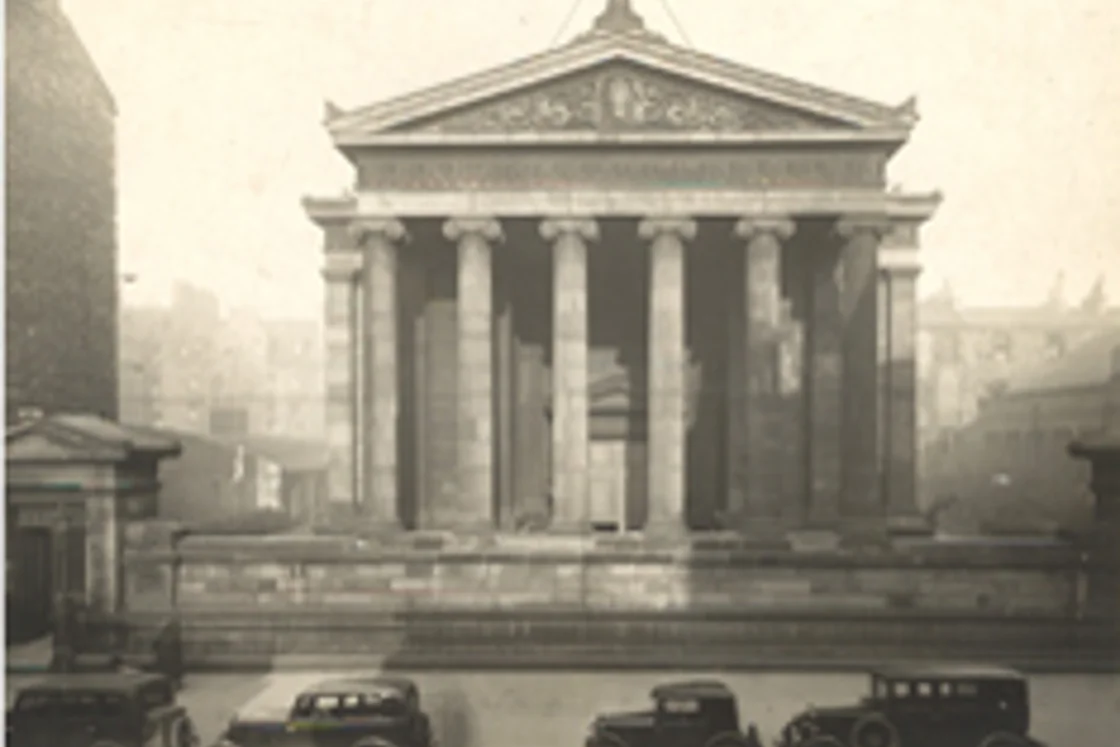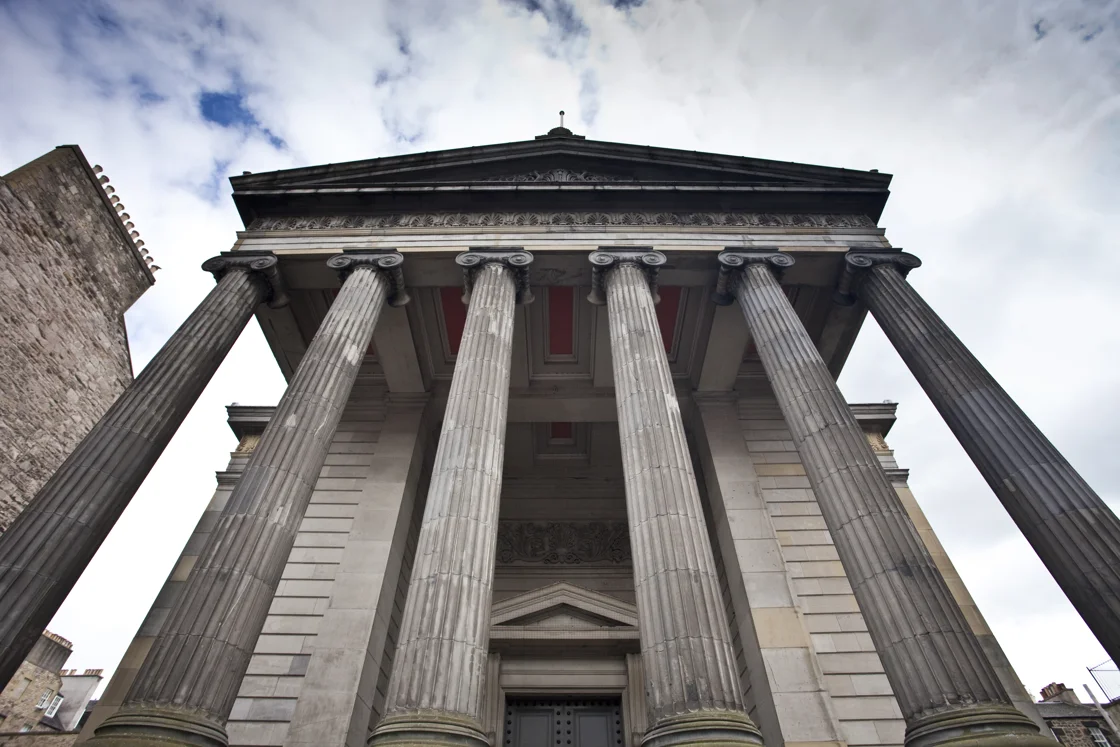The Royal College of Surgeons of Edinburgh (RCSEd) is one of the oldest surgical Colleges in the world. Its story begins in the late 1400s when the roles of surgeons and barbers, both requiring sharp instruments to practice their trade, were indistinctly defined concerning tasks as bloodletting, lancing, shaving, bandaging, and treating wounds in battle. Since its formal foundation in 1505, the Incorporation of Surgeons and Barbers, now The Royal College of Surgeons of Edinburgh, has dedicated itself to promoting the highest standards in surgical education, training and clinical practice.
In 1505, the Edinburgh Guild of Barbers and Surgeons was formally incorporated as a Craft of the Burgh, when a Seal of Cause (a charter of privileges) was granted to them by the Town Council of Edinburgh on 1st July. They wished to have exclusive rights to perform surgery and to have the powers to prosecute individuals who operated outside these boundaries.
The Seal of Cause conferred various privileges and imposed certain crucially important duties. The most important of these being that all apprentices should be literate, that every master should have full knowledge of anatomy and surgical procedures, and that this knowledge should be tested at the end of an apprenticeship. All clauses are still relevant to surgical practice and the College today. Their ancient given right to "brew aqua vitae" under the terms of the Seal of Cause has long since ceased to be exercised.
During the 1600s, the Incorporation would meet in rooms in Dickson's Close, in St Giles, and in other locations. In 1697, the first purpose-built Surgeons' Hall, designed by the architect James Smith, was completed. The fine building housed a 'Great Hall', a library, a laboratory, and an anatomy theatre, for which they were granted additional cadavers for teaching purposes. Public dissections were conducted there once a year.
The University of Edinburgh Faculty of Medicine (established in 1726) and the Royal Infirmary of Edinburgh (established in 1729) rapidly developed systematic medical teaching on a sound scientific basis. As surgery was still perceived by many as a manual craft rather than an intellectual discipline, the members of the Incorporation of Surgeons, completely separated from the Society of Barbers by 1722, undertook the task of education and significantly contributed to establishing Edinburgh's reputation as a centre of surgical teaching. In 1778, King George III granted a new charter, giving the surgeons the title "The Royal College of Surgeons of the City of Edinburgh".
In the early 19th Century, the 1697 Surgeons' Hall had become inadequate, partly due to the need to provide suitable accommodation for a large collection of pathological specimens presented by anatomist John Barclay. A site was acquired by the purchase of a riding school (The Royal Academy for Teaching Exercise) in Nicolson Street. William Henry Playfair, 1790-1857, the foremost Scottish architect of that era, was commissioned to design a building containing a Meeting Hall, Barclayan Hall, for the specimens (which included a full size elephant and rider), Lecture Room and Library. The College's new home was formally opened in July 1832 and in 1851 Queen Victoria granted a further charter giving the College its present title and establishing its independence from the City. This was the century of important initiatives in anesthesia and in antisepsis, through James Young Simpson and Joseph Lister, notable figures in the College's rich history.
In July 1905, the College marked its Quatercentenary by conferring Honorary Fellowship upon 36 of the world's most distinguished surgeons. These included Lord Lister, who famously initiated the antiseptic era, influenced profoundly by the work of Pasteur. Lister had become a Fellow of this College in 1855. In 1955, on the 450th Anniversary of the foundation of the College, Honorary Fellowship was conferred upon His Royal Highness, the Duke of Edinburgh, who had consented to become Patron of the College earlier in that year. A derelict tenement on Hill Place was made available to the College by the Edinburgh District Council and was topped out in May 1981.
The College celebrated its quincentenary in 2005 with the opening of a new skills laboratory, conference venue, and the College’s Hotel, Ten Hill Place Hotel. Today, the College continues to serve its original role: to provide education, assessment, and the advancement of surgeons and surgery.
In April 2014, the College opened a regional centre in Birmingham to cater for the 80% of its UK membership based in England and Wales.
With a distinguished history tracing back to 1505, the College boasts a legacy of excellence. Currently, the College has a network of over 32,000 professionals, comprising Fellows, Members, Associates, and Affiliates, in over 140 countries across the world. The College’s membership includes people at every stage of their career, from medical students through to trainees, consultants and those who have retired from practice.
Although the College boasts a history spanning over 500 years of history in Edinburgh, today, in its sixth century, it is committed to catering to the diverse needs of its members worldwide. With offices in Birmingham and Kaula Lumpur, its commitment to global support is evident.
The College is dedicated to assisting its global network of Fellows and Members in delivering optimal care for their patients. We do this by championing the highest standards of surgical and dental practice through our provision of courses and examinations, and Continuous Professional Development; our liaison with external medical bodies; and by influencing healthcare policy across the UK.
The Royal College of Surgeons of Edinburgh is home to the UK’s only Faculty of Surgical Trainers (FST). It's purpose is to support and develop surgeons in their role as surgical trainers. It works to increase the profile and recognition of surgical education and training and to disseminate the message that excellent surgical training means excellent and safer patient care. We are also home to the UK’s only Faculty of Perioperative Care (FPC), which recognises the importance of the entire surgical team and the essential role that perioperative practitioners play in all aspects of patient care and safety.
The College’s other Faculties include the Faculty of Dental Surgery (FDS), the Faculty of Dental Trainers (FDT), the Faculty of Pre-Hospital Care (FPHC), and the Faculty of Remote, Rural and Humanitarian Healthcare (FRRHH), with many Members holding dual memberships.
Gallery
RCSEd Motto: 'Hinc sanitas' - 'From here, Health'
This seventeenth century Badge of Office, worn by the College Officer on ceremonial occasions, is an important part of our heritage.
The College’s armorial bearings and motto are featured.
The motto is "Hinc sanitas" - "From here, health".
The bearings feature Aesculapius, Hippocrates, Edinburgh Castle, a saltire, a range of tools as used by a barber or surgeon and the figure of a cadaver, as granted to the surgeons in 1505 so that they might respectfully dissect to learn and teach anatomy.
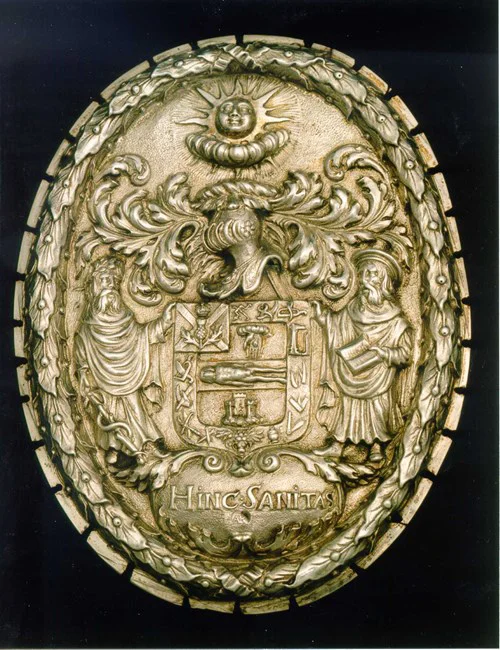
Research and Enquiries
For any questions about the 519 years of College history, its Fellows and Members of the past, its paintings, portraits, busts, furniture, books and archives, please contact the College Library and Archive. We are always pleased to arrange visits for enquirers and researchers by appointment. Our Surgeons' Hall Museums house one of the largest and most historic collections of surgical pathology material in the United Kingdom. Developed as a teaching museum for students of medicine, it has also been open to the general public since 1832, making it Scotland's oldest museum. Alternatively, some literature is available for purchase from our RCSEd bookshop.

